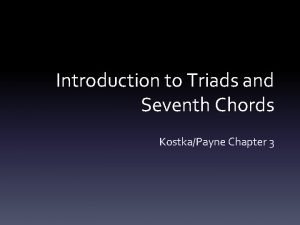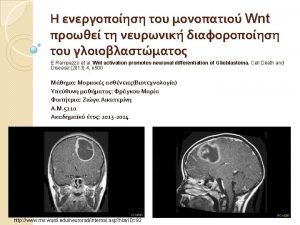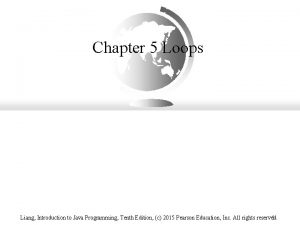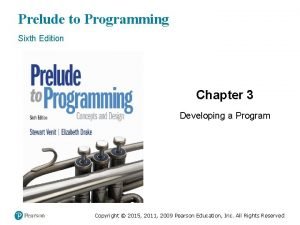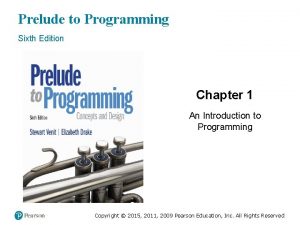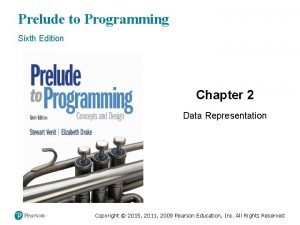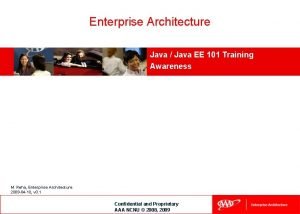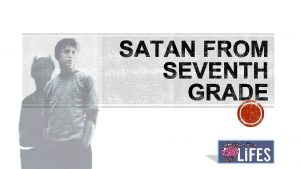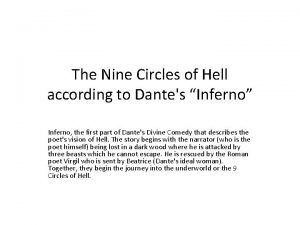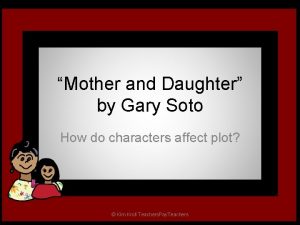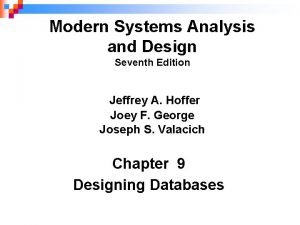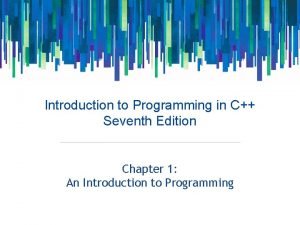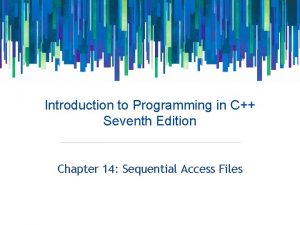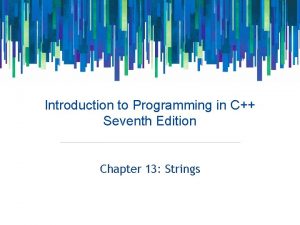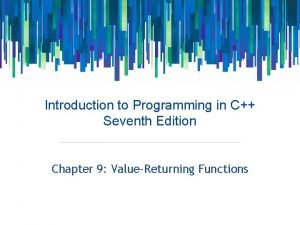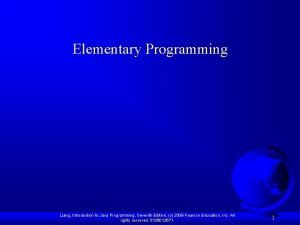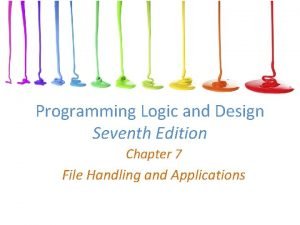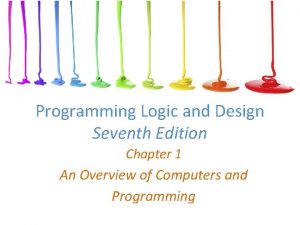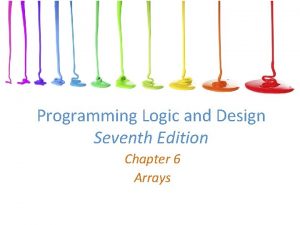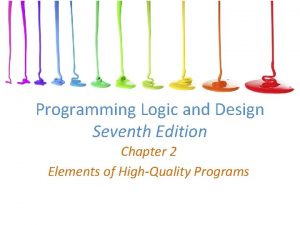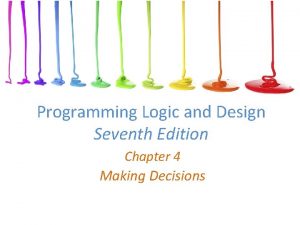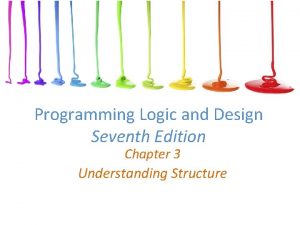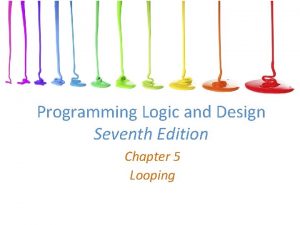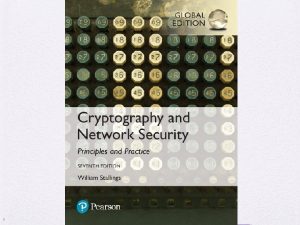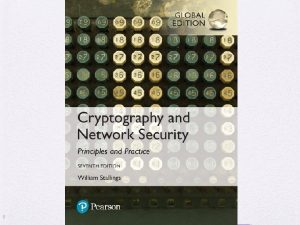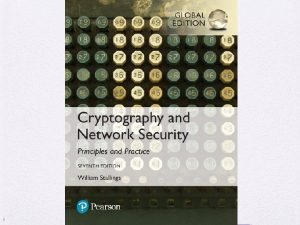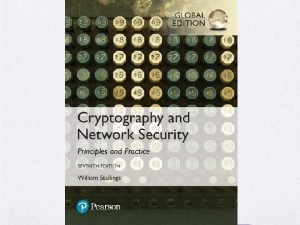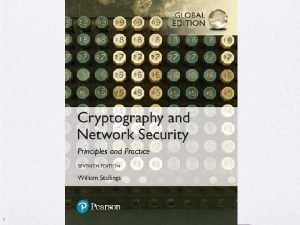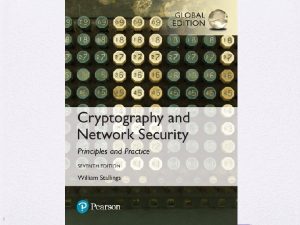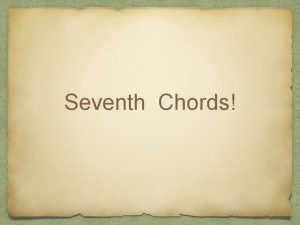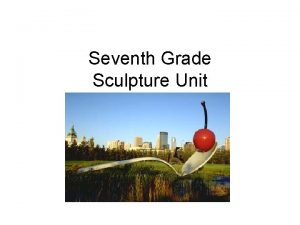Introduction to Programming in C Seventh Edition Chapter
































- Slides: 32

Introduction to Programming in C++ Seventh Edition Chapter 6: More on the Selection Structure

Objectives • Include a nested selection structure in pseudocode and in a flowchart • Code a nested selection structure • Recognize common logic errors in selection structures • Include a multiple-alternative selection structure in pseudocode and in a flowchart • Code a multiple-alternative selection structure in C++ An Introduction to Programming with C++, Seventh Edition 2

Making Decisions • True and false paths of a selection structure can contain other selection structures • Inner selection structures are referred to as nested selection structures; contained (nested) within an outer selection structure • Nested selection structures are used when more than one decision needs to be made before choosing an instruction • Inner (nested) selection structures are indented within their outer selection structures An Introduction to Programming with C++, Seventh Edition 3

Making Decisions (cont’d. ) Figure 6 -1 Problem that requires a selection structure An Introduction to Programming with C++, Seventh Edition 4

Making Decisions (cont’d. ) Figure 6 -2 Problem that requires a nested selection structure An Introduction to Programming with C++, Seventh Edition 5

Making Decisions (cont’d. ) Figure 6 -3 Problem that requires two nested selection structures An Introduction to Programming with C++, Seventh Edition 6

Flowcharting a Nested Selection Structure • Outer and inner selection structures can be thought of as making primary and secondary decisions, respectively • Secondary decision is called such because whether it needs to be made depends on the result of a primary decision An Introduction to Programming with C++, Seventh Edition 7

Flowcharting a Nested Selection Structure (cont’d. ) Figure 6 -6 Problem specification for voter eligibility problem An Introduction to Programming with C++, Seventh Edition 8

Flowcharting a Nested Selection Structure (cont’d. ) Figure 6 -6 A correct solution to the voter eligibility problem An Introduction to Programming with C++, Seventh Edition 9

Coding a Nested Selection Structure • Code for nested selection structures uses the if and else statements • Nested selection structures can be placed in either if or else statement blocks • Correct tabbing makes code easier to read An Introduction to Programming with C++, Seventh Edition 10

Logic Errors in Selection Structures • Three common logic errors made when writing selection structures – Using a compound condition rather than a nested selection structure – Reversing the outer and nested decisions – Using an unnecessary nested selection structure An Introduction to Programming with C++, Seventh Edition 11

Logic Errors in Selection Structures (cont’d. ) Figure 6 -11 A correct algorithm for the bonus problem An Introduction to Programming with C++, Seventh Edition 12

First Logic Error • Using a compound condition rather than a nested selection structure • Ignores the hierarchy between two sub-conditions – One applies only if the other is a certain value An Introduction to Programming with C++, Seventh Edition 13

First Logic Error (cont’d. ) Figure 6 -17 Correct algorithm and incorrect algorithm containing the first logic error An Introduction to Programming with C++, Seventh Edition 14

First Logic Error (cont’d. ) Figure 6 -18 Desk-check table for the incorrect algorithm in Figure 6 -17 An Introduction to Programming with C++, Seventh Edition 15

Second Logic Error • Reversing outer and nested selection structures Figure 6 -19 Correct algorithm and an incorrect algorithm containing the second logic error An Introduction to Programming with C++, Seventh Edition 16

Third Logic Error • Using an unnecessary nested selection structure • Often will produce the correct result, but will be inefficient An Introduction to Programming with C++, Seventh Edition 17

Third Logic Error (cont’d. ) Figure 6 -21 Correct algorithm and an incorrect algorithm containing the third logic error An Introduction to Programming with C++, Seventh Edition 18

Multiple-Alternative Selection Structures • Sometimes problems require a selection structure that chooses between several alternatives • Called multiple-alternative selection structures or extended selection structures • In a flowchart, diamond symbol is used; has multiple flowlines leading out, not just two • Each flowline represents a possible path, marked with the value that represents that path • if/else statements can be used to implement it; uses multiple if else clauses An Introduction to Programming with C++, Seventh Edition 19

Multiple-Alternative Selection Structures (cont’d. ) Figure 6 -25 Problem specification for Kindlon High School problem An Introduction to Programming with C++, Seventh Edition 20

Multiple-Alternative Selection Structures (cont’d. ) Figure 6 -25 IPO chart for the Kindlon High School problem An Introduction to Programming with C++, Seventh Edition 21

Multiple-Alternative Selection Structures (cont’d. ) Figure 6 -26 Flowchart for the Kindlon High School problem An Introduction to Programming with C++, Seventh Edition 22

Multiple-Alternative Selection Structures (cont’d. ) Figure 6 -27 Two ways of coding the multiple-alternative selection structure from Figures 6 -25 and 6 -26 An Introduction to Programming with C++, Seventh Edition 23

The switch Statement • Can sometimes use the switch statement to code a multiple-alternative selection structure • Statement begins with switch keyword followed by a selector expression in parentheses • Selector expression can contain any combination of variables, constants, functions, and operators • Must result in a data type that is bool, char, short, int, or long • Between opening and closing braces (after selector expression), there are one or more case clauses An Introduction to Programming with C++, Seventh Edition 24

The switch Statement (cont’d. ) • Each case clause represents a different alternative and contains a value followed by a colon • Can include as many case clauses as necessary • Value for each case clause can be a literal constant, named constant, or an expression composed of literal and named constants • Data type of the value should be the same data type as the selector expression An Introduction to Programming with C++, Seventh Edition 25

The switch Statement (cont’d. ) • Each case clause contains one or more statements processed when selector expression matches that case’s value • break statement tells computer to break out of switch at that point; must be the last statement of a case clause • Without a break statement, computer continues to process instructions in later case clauses • After processing break, computer processes next instruction after switch statement’s closing brace An Introduction to Programming with C++, Seventh Edition 26

The switch Statement (cont’d. ) • Good programming practice to document end of switch with a comment (//end switch) • Can also include one default clause; processed if selector expression does not match any values in case clauses • default clause can appear anywhere, but usually entered as last clause – If it is the last clause, a break statement is not needed at its end – Otherwise, a break statement is needed to prevent computer from processing later case clauses An Introduction to Programming with C++, Seventh Edition 27

The switch Statement (cont’d. ) Figure 6 -28 How to use the switch statement An Introduction to Programming with C++, Seventh Edition 28

The switch Statement (cont’d. ) Example similar to code in Figure 6 -28 An Introduction to Programming with C++, Seventh Edition 29

Summary • Can nest a selection structure within true or false path of another selection structure • Three common logic errors when writing selection structures – Using a compound condition instead of a nested selection structure – Reversing the inner and outer selection structures – Using an unnecessary nested selection structure An Introduction to Programming with C++, Seventh Edition 30

Summary (cont’d. ) • Some solutions require selection structures that choose from multiple alternatives; called multiple-alternative or extended selection structures • Can code these either with if/else statements or the switch statement • Diamond is used to represent multiple-alternative selection structures in a flowchart • Has multiple flowlines leading out; each representing a possible path and marked with appropriate values An Introduction to Programming with C++, Seventh Edition 31

Summary (cont’d. ) • In a switch statement, the data type of the value in each case clause must be compatible with data type of selector expression • Selector expression must evaluate to value of type bool, char, short, int, or long • Most case clauses contain a break statement; tells the computer to leave the switch statement • Good practice to mark end of switch statement with a comment (//end switch) An Introduction to Programming with C++, Seventh Edition 32
 Seventh chord inversions
Seventh chord inversions 3 layers of muscle
3 layers of muscle Database system concepts seventh edition
Database system concepts seventh edition Principle of information system
Principle of information system Molecular biology of the cell seventh edition
Molecular biology of the cell seventh edition Biology seventh edition
Biology seventh edition Introduction to java programming 10th edition quizzes
Introduction to java programming 10th edition quizzes Using mis (10th edition) 10th edition
Using mis (10th edition) 10th edition Using mis (10th edition)
Using mis (10th edition) Computer programming chapter 1
Computer programming chapter 1 Chapter 1 introduction to computers and programming
Chapter 1 introduction to computers and programming Chapter 1 introduction to computers and programming
Chapter 1 introduction to computers and programming C programming chapter 1
C programming chapter 1 Prelude to programming 6th edition
Prelude to programming 6th edition Prelude to programming 6th edition
Prelude to programming 6th edition Prelude to programming 6th edition
Prelude to programming 6th edition Java programming enterprise edition course
Java programming enterprise edition course Expert systems: principles and programming, fourth edition
Expert systems: principles and programming, fourth edition Perbedaan linear programming dan integer programming
Perbedaan linear programming dan integer programming Greedy algorithm vs dynamic programming
Greedy algorithm vs dynamic programming Windows 10 system programming, part 1
Windows 10 system programming, part 1 Linear vs integer programming
Linear vs integer programming Definisi linear
Definisi linear The devil from seventh grade 1960
The devil from seventh grade 1960 The seventh man characterization
The seventh man characterization 7th commandment catholic
7th commandment catholic Dantes layers of hell
Dantes layers of hell Seventh-day adventist leadership structure
Seventh-day adventist leadership structure Brave seventh grade viking warrior
Brave seventh grade viking warrior Haruki murakami the seventh man
Haruki murakami the seventh man The seventh article of the creed speaks of the holy spirit.
The seventh article of the creed speaks of the holy spirit. Mother and daughter by gary soto
Mother and daughter by gary soto Seventh normal form
Seventh normal form
